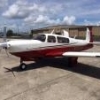Search the Community
Showing results for tags 'stall warning'.
-
For years, most Angle of Attack (AoA) systems have served as basic stall warning tools—leaving many pilots to question their true value. But what if an AoA system could do more? What if it offered useful, reliable data throughout the entire flight envelope? Introducing Absolute AoA, the latest FAA-certified innovation from Holy Micro! LLC—the team behind the FAA Approved SkyVoice Alert 500 and SkyVoice Glassy Guide 400, known for its clear, voice-based altitude callouts. Absolute AoA breaks away from the limitations of traditional differential pressure systems. Instead of relying on a single sensor, it uses a multi-sensor approach based on normalized pressure ratios, delivering accurate and continuous AoA data in all phases of flight—not just at the edge of stall. Traditional systems are often sensitive to placement, require long tubes, tedious calibration, and connect awkwardly to audio systems. Many are effective only at low speeds and high angles, with little benefit during normal operations. Absolute AoA solves these challenges with a forward-looking design built for real-world flying. The probe, machined from aircraft-grade 6061 aluminum, mounts easily beneath the wing’s inspection plate. Integrated LiDAR detects flap deployment automatically. Whether you’re in climb, cruise, approach, or maneuvering near Vx, Vy, or best glide, Absolute AoA adapts to changing flight conditions and aircraft configurations in real time. The installation process is simplified and efficient. Installers can choose between a wireless option, which allows quick installation using WiFi/Bluetooth, no long tubes and minimal wiring or a wired version, typically completed in 3–4 hours using existing inspection panels. For cockpit integration, Absolute AoA offers multiple display options— a compact 2.8” touch screen designed to fit a standard 3 1/8” instrument panel opening, and a 2.8” bar-style touch screen display for dash mounting—both providing real-time feedback to support better pilot decision-making. These displays are optimized for readability and integration across various cockpit layouts and aircraft types. Audio alerts are flexible too: a wired connect to the aircraft’s audio panel/radio via the AUX/Alarm port, or transmit alerts via Bluetooth to a headset/audio panel, or use the optional 5W external speaker (recommended for the clearest alerts). Also included is a 6.5-inch Human-Machine Interface (HMI) designed to streamline system setup and calibration. The intuitive interface enables fast, accurate setup without requiring lengthy procedures or complex configurations. Absolute AoA debuted at SUN 'n FUN and is gaining attention at EAA AirVenture Oshkosh 2025 , where it will be featured at Hangar C, Booths 3149 & 3150. Backed by FAA approval and designed to enhance pilot awareness beyond stall protection, Absolute AoA helps you fly better—smarter, safer, and with confidence. Learn More and Pre-Register
-
- 2
-

-
- aoa
- stall warning
-
(and 2 more)
Tagged with:
-
I was flying back to Sweden from the UK yesterday. Went down from FL190 over the North Sea through a layer of icing in IMC. It was not much, not the complete windscreen and just some mm on the wing. The ice went away and then suddenly out of the cloud and when the ice melted below 9000 ft and speed still was about 177 kt, the stall warning started slowly to scream. The wings had all the ice melted away and after 5-10 minutes it began to scream. I had to take out the circuit breaker. After landing and in warm temperatures, it was still screaming if I enabled the circuit breaker again. I experienced a problem with the stall warning earlier and I think that had to do with why I couldn't turn off the Avionik Master last year. Suddenly the Avionik Master started to work after I have exercised the stall warning switch, but I was not able to prove it since it had gone then. My Mooney M20K 252 has no TKS so I think it is not preheated. Does anyone have experience of this?
-
I'd like to know people's experiences with angle of attack instruments. Do they work? Do they not work? Are they easy to use? Are they helpful? Etc... I will be completely transparent. I know Part 23/25 and military certificated AOA systems inside and out and how they operate. I have designed a 6-hole probe (really 11 holes) to measure: airspeed, alpha (AOA), beta (angle of sideslip), altitude and vertical speed to autonomously control an unstable UAV … 30 years ago. I am currently designing a system for certificated airplanes. Thank you! Your comments will be priceless.
- 68 replies
-
- aoa
- angle of attack
-
(and 1 more)
Tagged with:
-
Hi Mooniacs, We have a problem with our 2005 Mooney Ovation 2GX - suddendly doing flare the engine instrument switch pop out - we thought it was the tachometer, but when disconnected the problem was still present. After some research, we figured out that it's the lift detector (stall switch) that cause the problem. When we have power on, and flick the switch shortly, then the fuse "engine instruments" pop out. Some times you can activate the lift detector 2 seconds and hear the stall warning on for quite som time, other times the fuse instantly pop just the moment you flick the lift detector. The lift detector works (it activate the stall warning), but it pop the engine instrument fuse. Other Mooniacs ever had same issue? And have idea's for possible solutions other than buy a new expensive part without knowing for sure that's the issue. Best Regards from Denmark.
- 3 replies
-
- stall warning
- lift detector
-
(and 1 more)
Tagged with:
-
Hey all, I did a quick search on this and didn't see anything directly related, but an interesting thing happened to me today on landing at PDK. I was flying through some cool light rain and it was pretty sloppy, so there was plenty of moisture around. At any rate, as we made a nice landing the stall warning horn came on like it usually does, only this time the darn thing wouldn't go off. I was on the ground at home so I just taxied that way and got back into the hangar. But the vane isn't stuck, and I tried blowing out to see if any water had gotten in there and was maybe closing the circuit. None of that mattered. So is it possible that water would cause this? If not, what else would cause that circuit to stay closed? I did bump the vane a little bit while untying from my spot at Amelia Island, but it didn't bend out of shape and it didn't misbehave until we were landing in the rain. Any ideas? Thanks!
-
I was not able to get the stall warning to sound in flight on my recently purchased 1979 M20K. The switch moves freely and operates as designed when tested on the ground. The mechanic was not sure what adjustments and additional troubleshooting could be done. Any thoughts or suggestions on what I could try? Thanks. --Alex






